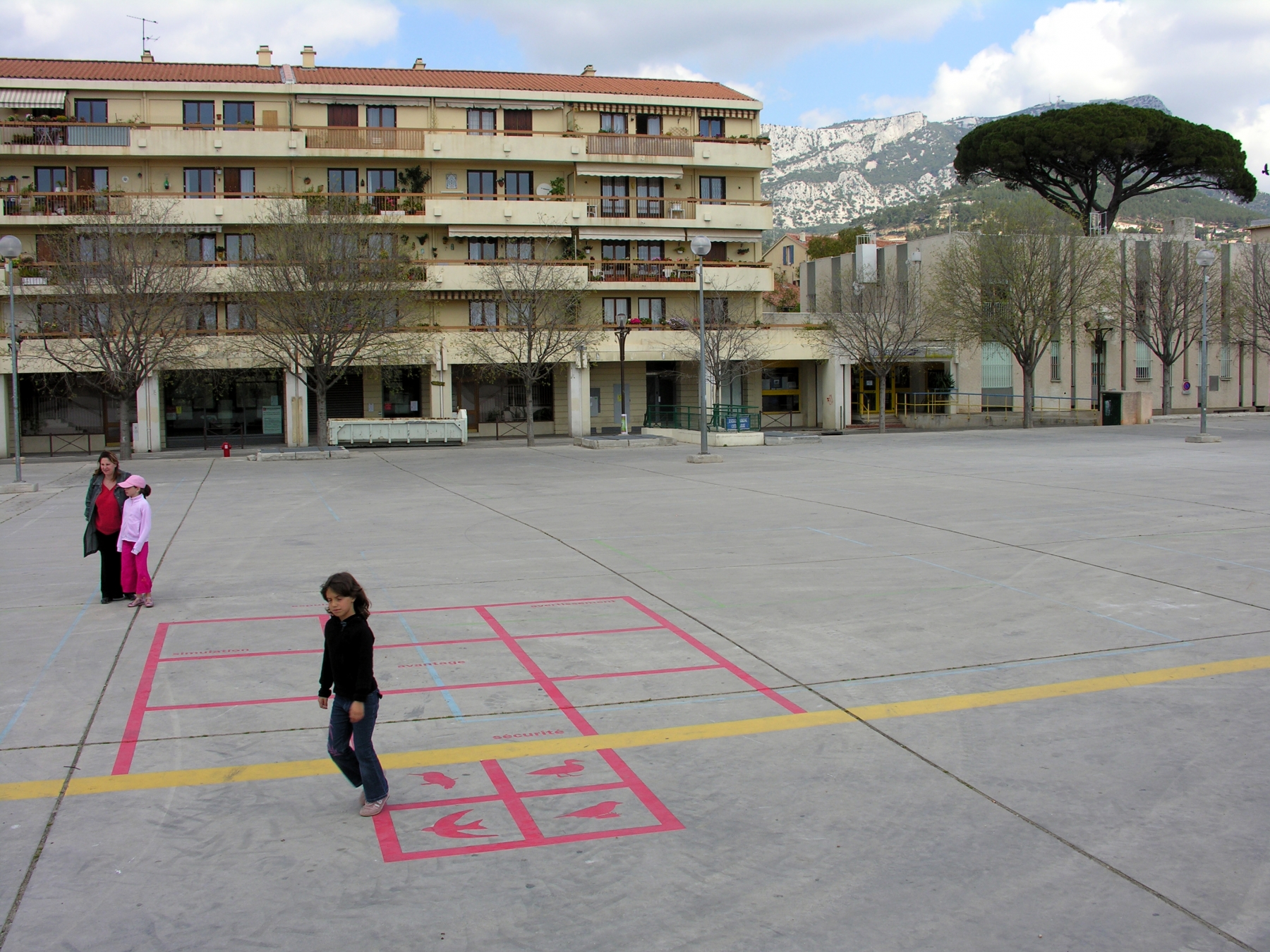Hors-jeu / Off-side
2006
Temporary interventions in the public spaces of the city of La Valette-du-Var in France.
Three installations – two on squares and one in the city’s multimedia library – reflect on the meaning of ground markings in public space.
The meaning of the markings applied on pavements, roads or sports fields depends on the context in which they function (the street, the sports field…), the scale used and the colours in which they are executed. They form a visual grammar that provides us with clues as to how we should behave in pubic space (e.g., where it is safe for pedestrians to walk, etc.), which sport is practised on a certain field, etc.
As a metaphor for the concept of ‘markings in public space’ I have used hopscotch diagrams like the ones children draw on pavements and schoolyards. They are ‘game architectures’ akin to archaic architectures, the dimensions used being closely linked to the human body (the length of a child’s foot determines the size of a hopscotch diagram). Furthermore, such diagrams contain all sorts of (linguistic and religious) references to the country’s culture.
Place du Général de Gaulle:
In this installation a grid is drawn onto the square with red paint. A yellow line (an existing element) divides this grid into two parts:
- a smaller part, referring to the childrens’ world with a scale based on the human body (the length of the artist’s foot) and images of birds (a reference to the city’s past and to the gardens of Vallis Laeta, the ‘Happy Valley’).
- an enlarged grid in which the images have been replaced with words. These words, derived from the rules of the football game, seem to refer to abstract concepts. Rules for this unusual hopscotch diagram are lacking.
Place de l’Horloge:
Here, the drawing of the hopscotch diagram has turned from ‘game architecture’ into a plan. Its location in front of a church points to its derivation from religious architecture. The game aspect has disappeared; the stone that children push forward with their foot has been replaced with a larger one. This ‘hopscotch-plan’ now resembles an island, surrounded by the names of seas and lakes derived from the nomenclature of the visible side of the moon. Rather than reflecting geographical reality, these names, which were first given in the seventeenth century, are references to important concepts in the society of the era. Today, they sound incredibly poetic. The moon lends a different meaning to the ‘heaven’ of French hopscotch diagrams. It refers to societies and calendars in which the moon, rather than the sun, played an important role. The installation on Place d’Horloge acts as a time machine of sorts.
Installation ‘Global-local’ in the multimedia centre:
Today’s new world map has developed according to economic, political and religious parameters, with the old borders between European countries gradually eroding. At the same time, the public debate on multicultural society has tended to stress differences.
In this installation I have used the hopscotch diagram (the graphic element of this childrens’ game) as a metaphor for cultural identity. It shows the cultural diversity of our society as a richness rather than a threat.


